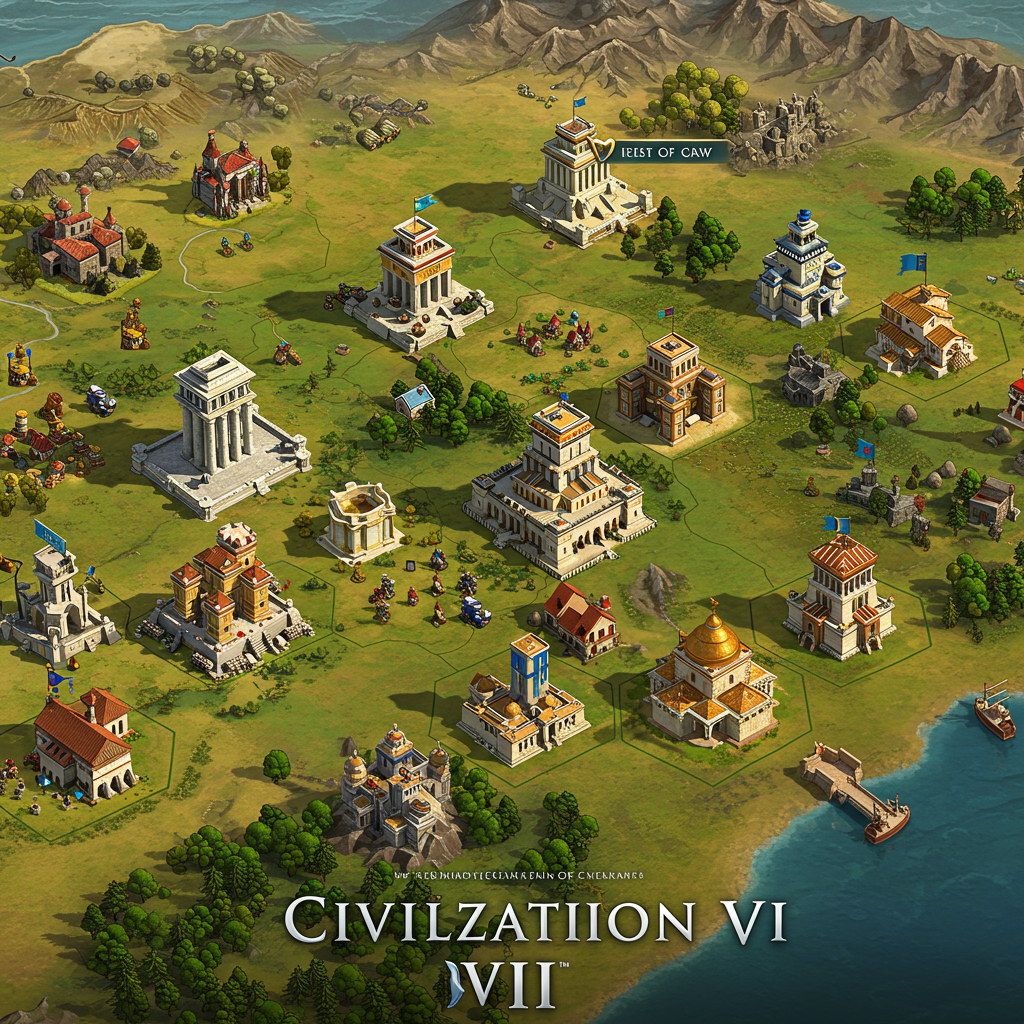Just over 130 days after its highly anticipated launch, Civilization VII has released update 1.2.2, a patch that appears squarely aimed at appeasing the series’ traditional fanbase. While the game garnered praise for its visual polish and innovative core systems at release, a significant subset of players felt it introduced mechanics that strayed too far from the classic, sandbox-style Civilization experience. Initial post-launch support focused on essential bug fixes and UI tweaks, but version 1.2.2 stands out as potentially the most significant update yet in terms of introducing new player-driven customization options.
Available now on most platforms (with Switch versions arriving later), this patch adds granular control over game setup, allowing players to tailor their experience more closely to their preferences. A central theme of the update is the ability to disable several features that proved controversial among traditionalists.
Giving Players Control: Disabling Controversial Features
A primary point of contention for longtime Civ fans was the introduction of new systems that added perceived structure to a franchise historically known for its open-ended nature. Update 1.2.2 directly addresses this by allowing players to opt out of some of these core mechanics.
Legacy Paths: Structure or Constraint?
Perhaps the most significant change is the option to disable Legacy Paths. These were structured sequences of objectives tied to Age transitions, offering major rewards upon completion. While designed to provide new strategic avenues, many traditionalists felt they imposed too much direction, moving away from the series’ sandbox roots.
Now, players can disable specific Legacy Paths for individual Ages or turn them all off entirely via the advanced settings menu during game setup. This shift facilitates a more open-ended game experience, akin to earlier Civilization titles. It’s worth noting that the radical Age transitions themselves remain a foundational element of Civilization VII‘s design and cannot currently be disabled.
Crisis Mechanics: Urgency or Annoyance?
Another feature that drew criticism was the Crisis system, urgency events that typically triggered near the end of each Age. While the concept aimed to add pressure and narrative, many players found these mechanics more annoying than engaging.
The 1.2.2 update introduces the welcomed option to individually or completely turn off Crisis events. Based on community feedback, this change is expected to be particularly popular among players who found this system disruptive.
Unleashing Civilization Choices
Civilization VII launched with a distinctive design choice where players pick a new civilization upon transitioning between Ages. Initially, this choice was limited based on decisions made in the previous Age. The update addresses this by adding a setup option to remove this limitation, allowing players to select any available civilization when entering a new Age, offering much greater flexibility.
As a bonus quality-of-life improvement, players can also now choose to disable the score victory condition at the end of the Modern Age if they prefer to focus solely on other victory types.
Deeper Customization & Scale
Beyond disabling features, the update introduces several other key customization options.
Larger Worlds to Explore
Responding to player demand, version 1.2.2 adds support for large and huge map sizes. These larger maps default to accommodating 10 players, providing a grander scale for empires to expand and interact.
True Granular Difficulty: Tailor Your Challenge
A highly requested feature, granular difficulty settings are now available. This allows players to fine-tune the challenge by setting different difficulty levels for specific aspects of the game, such as AI combat strength or Happiness rules, independently of others. Accessing this feature requires setting the top-level difficulty to the newly available “custom” value in the advanced settings menu. This level of precise control is a welcome addition for players seeking a uniquely tailored challenge.
Independent Powers: Friendlier Starts
Another useful addition to game setup is the option to adjust the default hostility level of independent powers. This is particularly beneficial for players who prefer focusing on economic development and city-building in the early game rather than early conflicts.
Modernizing the Experience: Official Mod Support Arrives
For the dedicated modding community, update 1.2.2 introduces official mod support. Previously, modding Civilization VII required manual file manipulation. Now, Firaxis provides integrated support, including distribution via Steam Workshop, comprehensive documentation, and even example mods created by the development team. This significantly simplifies the process for both mod creators and players.
Refinements and Small Touches
The patch also includes numerous other improvements and balance adjustments:
A redesigned loading screen now offers more detailed information and interactive elements, hinted by Firaxis as a preview of future UI overhauls, though some players have noted issues with scaled leader asset appearance.
Balance changes address various aspects, including allowing trade convoys to travel over land (fixing issues with treasure ships getting stuck in lakes) and providing broader strategic options for the Exploration Age economic path.
A significant overhaul of Town Focuses includes the addition of new options and a highly anticipated nerf to the previously overpowered Hub Town focus, changing its influence bonus per connected town from +2 to +1. While improved, some still question if this nerf goes far enough.
Smaller balance tweaks cover areas like city-state bonuses, pantheons, and religious beliefs.
And, in a detail sure to delight some players, you can now issue a command to pet the scout unit’s dog.
What’s Still On the Horizon
While 1.2.2 delivers significant changes, two traditionally standard Civilization features remain absent: autoexplore for scout units and hotseat multiplayer support. Firaxis has indicated that both are in development, alongside further UI overhauls promised for future updates.
A Turning Point for Civilization VII?
At launch, Civilization VII received mostly positive reviews, but the author (Samuel Axon) noted its shortcomings for traditional players and suggested a “wait-and-see” approach might be prudent for some. Previous updates focused on foundational fixes.
Version 1.2.2, more than any preceding patch, feels like a genuine pivot point. By empowering players to disable controversial new features and adding highly requested customization options like larger maps and granular difficulty, Firaxis appears to be directly addressing the core criticisms from series traditionalists.
It’s a common pattern in complex strategy games for them to truly hit their stride weeks or months after release, significantly improving through post-launch support. With its UI challenges and initial design choices that alienated some veterans, Civilization VII was a notable example of a game needing this refinement period. This update marks a crucial step in making Civilization VII a game that can be enjoyed by a much broader range of Civ* fans, embracing both its new innovations and offering a path back towards a more traditional experience for those who seek it.



